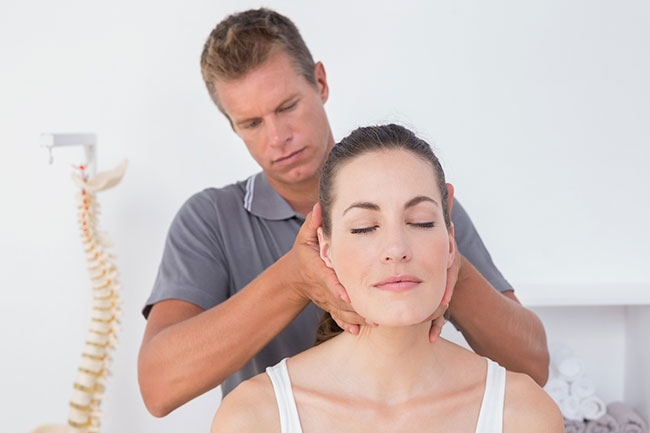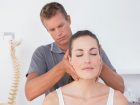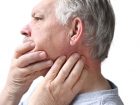
Co-management of temporomandibular disorders and orofacial pain
By Jennifer Illes
Features Collaboration Profession annex DENTAL CARE MANAGE tmd orofacial pain temporomandibular disorders TMD TMJCo-management between the dental professional and chiropractic physician
 When caring for chronic jaw pain patients, we always have to remember that patient values trump doctor values – even over what the best approach to care is. Photo: Adobe stock
When caring for chronic jaw pain patients, we always have to remember that patient values trump doctor values – even over what the best approach to care is. Photo: Adobe stockThe management of temporomandibular disorders (TMD) and orofacial pain is a complex problem within all health care fields. This complexity arises from the many problems that can be associated with masticatory function. In order to effectively manage TMD and orofacial pain disorders, we must be able to recognize them so correct treatment can be selected.
As interdisciplinary health care grows, it’s important to understand that patient care should ultimately be the main focus, and hopefully differences can be put aside in light of our common goal. TMD treatment trends have leaned toward a multi-modal as well as multi-disciplinary management, in line with that of other chronic musculoskeletal conditions.1 TMD is “a collective term embracing a number of clinical problems that involve the masticatory musculature, the temporomandibular joint (TMJ) and associated structures or both.”1
Sign up to get the latest news and events from Canadian Chiropractor. Our E-newsletter will be sent to you only once per week, on Mondays.
TMD’s are found largely within the province of dental care. However, historically speaking, therapy has concentrated on the mechanical aspects, largely ignoring the physiological and psychological pathologies. Multidisciplinary treatment planning is based on the data derived from diagnostic functional analyses including established orthopedic techniques, intraoral examinations, and imaging. DC’s have been extensively trained in taking a well-detailed and thorough history. The patient history is the foundation for the diagnosis and treatment of imbalances and dysfunction.2
When should DC’s co-manage with a dental professional?
Currently, there is no evidence within peer-reviewed literature to suggest specific incidences when a chiropractic physician should refer to a dental professional. Clinically speaking, it usually is with co-management of the common TMD, which involves muscles and/or related structure of the TMJ. Chinappi and Getzoff were the first to develop a model for treating structural based-disorders of the TMJ. They claimed that the position of the jaw and head and neck are biomechanically and facially interconnected.3 Their research demonstrated that acute symptoms experienced during the initial dental treatment phase were caused by the inability of the neck to adapt to maxillary and mandibular changes. Chiropractic treatments enable the body to respond positively and adapt to dental changes. The position of the jaw, head and neck are intimately related. For example, often with acute dental pain and discomfort of the jaw, the cervical spine will seek an antalgic position (i.e. usually forward head posture) temporarily. This pattern could become a neuromuscular pattern if not cared for at an appropriate time.
Chiropractors specialize in musculoskeletal disorders, and usually have good palpation and manual therapy skills. Myofascial release technique can help reduce hypertonicity of muscles. Hypertonic muscles can lead to reciprocal inhibition of the antagonist muscle, which ultimately leads to poor posture and instability. Intraoral myofascial therapies are thought to influence craniofacial structures. The techniques usually involve applying digital pressure (also known as trigger point therapy, and acupressure) into masticatory muscle trigger points, origins, or insertions, using intra-oral contact points. A hypothetical clinical scenario includes a patient presenting to a dental office for tooth pain. The dentist may do a root canal and even perform a tooth extraction, and the tooth pain could still be present. Trigger points which are hyperirritable ischemic areas within muscles produce a common referral pattern. Both the temporalis and masseter muscles can refer pain to the teeth (typically mandibular molars).4
If this case was co-managed, the DC may have palpated the muscles of mastication and found that the patient’s same pain was reproducible, and therefore possibly prevented unnecessary procedures. Another common clinical scenario would be when a patient presents to the chiropractor’s office after an acute onset of symptoms from a recent dental visit. These symptoms that occurred during the initial dental treatment phase were caused by the inability of the head and neck to adapt to maxillary and mandibular changes. A protruded jaw can come from several different clinical scenarios, but one is from cervical spine pain ultimately due to forward head posture (i.e. deconditioning syndrome). So quite often what will happen, is the chiropractor will fix the musculature and realign the spine, which will offset the mandibular and could create malocclusion or misalignment of the teeth. It’s my personal opinion that the chronic jaw pain patient seek out chiropractic care first, then seek the co-management of a dental professional for the aforementioned reason.
When caring for chronic jaw pain patients, we always have to remember that patient values trump doctor values – even over what the best approach to care is. For example, most research over the last several decades still approaches the first line of management for acute TMJ pain patients with a custom oral appliance. While these may be timely, they can be costly for the patient. Some patients claim to have already “tried” them and say they didn’t work. I’ve had patients tell me that they just want the pain to go away without having to buy or use this costly device. With the use of low-level laser light therapy and patient education (ex. the use of a soft food diet for four weeks), there have been great successes with reducing pain of even chronic sufferers.
Aside from the possibility that our professions working together can be mutually advantageous, ultimately it will be the patient that benefits most from this partnership.
Scenarios When a DC Should Refer to a Dental Professional
- When an intraoral examination reveals pathology (ex. dental carries and abscesses, poor dental hygiene)
- When the patient had recent dental work, and now has jaw pain (ex. a hot crown)
- When a patient subjectively tells the DC their “bite isn’t normal”
- Examination of a patient that reveals malocclusion
- When conservative chiropractic care is not getting the patient better, or symptoms are becoming worse (usually a trial of four weeks of care is given)
Scenarios When a Dental Professional Should Refer to a DC
- When there is a myofascial dysfunction within the muscles of mastication and/or head and neck
- When there is significant limitation of active cervical spine range of motion (aROM)
- When the patient presents with history of head trauma, cranial nerve palsies, and/or migraines, cervicogenic headaches.
- When pain is not decreased with traditional dental methods (i.e. oral appliances, root canals, botox injections, removal of teeth, etc.)
- When there are significant psychological problems (ex. PTSD, and depression)
REFERENCES
- De Leeuw, R. (Ed.) Orofacial pain: Guidelines for assesment, diagnosis and management. Quintessence (2008).
- Okeson J. P. Management of temporomandibular disorders and occlusion. Modby (1998).
- Chinappi A., Getzoff, H. A new management model for treating structural based-disorders: Dental orthopedic and chiropractic co-treatment. JMPT. 1994; 17(9): 614-619.
- Travell J. G., Simons D. G. Myofascial pain and dysfunction: The trigger point manual. Williams & Wilkins (1983).
Jennifer Illes, (DC)(MS), is a chiropractic physician and a faculty member at Keiser University in West Palm Beach, Florida. Her study of interest includes oral facial pain syndromes and TMD. She can be reached through email at jenniferilles@icloud.com, and you can follow her on Instagram @fitchirochick.
Print this page

